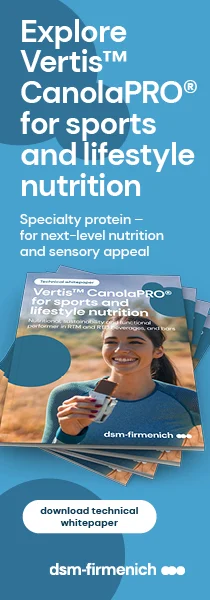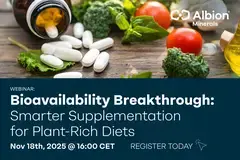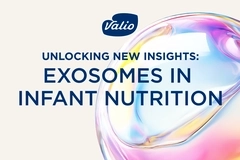Processing breakthroughs 2018: HPP, PEF and REV technologies
09 Apr 2018 --- Three of the most promising processing technologies for the nutrition space gaining momentum in 2018 are High Pressure Processing (HPP), Pulsed Electric Fields technology (PEF) and Radiant Energy Vacuum technology (REV). These technologies meet the increasing demand for more cost-effective and sustainable food processing while maintaining the natural qualities of foodstuff. NutritionInsight spoke to experts in these forward-thinking areas at Anuga FoodTec 2018, Cologne.
HPP Innovators, Avure
HPP is a cold pasteurization technique by which products already sealed in final packaging are inserted into a vessel and exposed to a high level of isostatic pressure (300-600MPa/43,500-87,000psi) transmitted by water. The extreme pressure created crushes harmful bacteria while preserving the vitamins, taste and texture of the food. HPP is also known to extend shelf-life considerably – salsa made fresh will last two weeks, while HPP can extend the shelf-life to four months, while preserving the same levels of freshness. Unlike heat pasteurization techniques, HPP prevents damage to vitamins, antioxidants, flavor and the color of foods. It can be used for a growing list of products, including sauces, dips, dressing, juices, meat, pet food, baby food, seafood and wet salads.

Errol Raghubeer, Vice President of Avure, the first company to commercialize HPP, speaks to NutritionInsight about the growing market for HPP and its benefits. “HPP is a pasteurization technology that has been used in the industry from the late 1990s, but we are seeing a tremendous amount of growth in new categories of product. During the developmental stage, it was used in guacamole, salsa and RTE meats, but we have seen huge growth in the beverage industry in a wide variety of fruit and vegetable juices. We have also seen dramatic growth in new applications such as ready meals, both in the US and Canada, but also in Asia and Europe.”
“There are three reasons for this. Firstly, HPP achieves high food safety levels, secondly, HPP uses an all-natural process without chemicals and thirdly, HPP does not affect nutrients, thereby meeting the consumer demand for natural, healthier products.”
Avure was acquired by JBT in 2017, a move which has allowed Avure’s HPP technologies to reach a wider market. “Being part of JBT increases our worldwide reach and we can get into markets more competitively with more sales forces,” explains Errol Raghubeer. “JBT is a good supporter of us as far as the technology is concerned, and there are always opportunities to grow as the technology becomes more accepted by the industry.”
“Avure has just introduced a few larger models that are expandable. Without changing the system, we can upgrade the speed of the system by just adding additional pumps. That will meet customer requirements. You are not changing the system, just intensifying the pumps to speed the process up. It changes the time in which necessary pressure is achieved, but it also allows customers to get into the market at a lower capital investment.”
PEF Innovators, EnergyPulse Systems
PEF processing, also known as electroporation, is a non-thermal food processing technique for the mild preservation of liquid foods and beverages. It uses short, high voltage pulses to cause cell disintegration and microbial inactivation, retaining the freshness, nutritional and functional value of the product. The technique is energy-efficient and time-effective as it requires minimal heat while accelerating the diffusion processes, such as water removal. PEF is known to increase shelf-life while maintaining better nutritional value in comparison to traditional food processing techniques.
The EU funded FieldFood project aims to demonstrate the successful and real-scale capabilities of PEF technology in the processing of plant-based foods. The project analyzed the production of fruit juice, tomato products, wine, cider and olive oil, creating flexible and portable low-cost pulse generators.
Marcos Pereira of EnergyPulse Systems – a participant in the FieldFood project – speaks to NutritionInsight about the high quality, low energy benefit of PEF processing. “PEF means less heat, more efficiency and less water usage. It goes with the customer trend asking for higher product quality with greater energy efficiency.”
“The focus of the FieldFood project was on small producers, ranging from tomato producers, to wine producers, to those processing apples and cherries. The project was successful. We demonstrated very efficient production with a long shelf-life. We used modulators that only cost a fraction of the market price and we were also able to link them on a time basis. The key conclusion is that small producers can use PEF for better product quality, increased yield, and lower costs, including wineries and olive oil producers.”
PEF technology is evidently one of the key areas to watch in future food processing, including for snacks. Elea – the world’s leading provider of PEF to the food, beverage and scientific sectors with over 70 installed systems – showcased their new application at Anuga FoodTec 2018. “An ordinary sweet potato is quite difficult to process, especially if you want to do more extreme cuts,” says Julian Witt of Elea, “but if you do a pretreatment with PEF you open up the cell membranes, which causes a leakage of the content and the pressure is released so the structure becomes more flexible. This is used in the chips industry to make it easier to cut, where there is less starch in your process water that you are losing and you can go for more extreme cuts too. We have developed the concept for a crinkle cut sweet potato product, which is difficult to do on an industrial scale.”
“The product is delivered on a belt between two electrodes where the pulsed electric field is applied. It is basically a conveyor belt, where the entry to exit takes about 10 seconds.”
“We have about 100 units installed already, mostly in the snacking industry. We have a strong focus on R&D and help a lot with the implementation in the best possible way. Different applications are possible, so if you look at drying applications you can see that you can evaporate the water much faster too. You could also do a gentler drying. There are also applications in the field of reduction of microorganisms in liquids, juices and smoothies to make a better product.”
REV innovators, EnWave
REV dehydration technology uses a combination of pressure and microwave energy to deliver a high-speed, low-temperature, efficient drying process. REV technology homogeneously removes water from organic materials, providing superior flavor and texture while preserving the nutritive value of food products. Similarly, it also preserves the bioactivity of pharmaceutical products. The technology is more economical and much faster than freeze drying and produces superior products over air and spray drying. It is a continuous process that can control final moisture levels in a cost-effective manner and typically has a smaller footprint than competing processes.
Brent Charleton, Senior Vice President EnWave, tells NutritionInsight about the innovator's commercialization of the REV technology and its benefits. “We have commercialized it into eight different market verticals, including fruits, vegetables, spices and herbs, meat snacks, the dairy industry in the form of shelf-stable cheese and yogurt snacks.”
EnWave brand Mooncheese was launched to the US product in 2014, demonstrating to other manufacturers that REV could create value. “Fortunately for us, Mooncheese is now distributed in all Starbucks coffee chain outlets in North America, as well as in Costco and many others. In fact, it now has over 25,000 points of distribution. It is a US$8 million revenue stream for our company. It was then replicated by eight other companies around the world, including those based in Chile, Turkey and Australia, where they launched their own branded shelf-stable cheese snack,” says Brent Charleton.
The second option is dried 100 percent natural fruit snacks, which he stresses are not the same as freeze-dried fruits. “They are dried under vacuum, and therefore tend to puff up more and have a softer crunch, while still maintaining the nutrient values that you would expect in a premium product. We have now launched on Amazon on a test basis. This is a one-ounce product that sells at US$4-5 and the reviews have been phenomenal thus far.”
“Shelf-life really depends on the quality of packaging. We dry down the raw material to below the necessary water activity threshold, in order to ensure a longer shelf-life, which will be impacted by the packaging quality,” he notes.
The company has all of the certifications expected from a processing company. “Microwaves are used frequently in the industry and because we are creating a low-temperature drying process, we are not damaging the foodstuff like you potentially would in your household microwave,” he concludes.
Meeting the sustainability and health trends
Anuga FoodTec 2018 demonstrated that sustainability is one of the major drivers in processing innovation, as regulations around industrial waste and emissions continue to intensify. Moreover, a decrease in energy expenditure without affecting the product’s safety or quality can offer a large economic advantage for the plants where advancements will be applied. Consumer demand for more natural and healthy products also continues to grow and accordingly, mild processing techniques will become a necessity in specific product categories. Products produced with mild processes maintain a high nutritional value, appealing color and flavor and have a decreased production cost due to lower energy expenditure. HPP, PEF and REV technologies are demonstrating this much-desired ability to increase the sustainability levels of processing while also retaining the natural qualities of foodstuff.
By Joshua Poole















